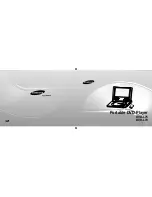
GROUND SOURCE
LOCATION
GROUNDING THE GENERATOR
PREVENTION OF OVERLOAD
Exceeding wattage capacity can result in damage to the generator and to the connected electrical devices. Adhere
to the following to prevent exceeding wattage capacities:
•
Calculate the total wattage of all electrical devices to be connected at one time to the generator.
•
The total should
NOT
be greater than the generator’s wattage capacity.
•
The wattage from various devices can be found on the device’s data plate or decal. See the Wattage
Consumption of Equipment section on page 11 for a listing of devices and their running watts.
•
If you cannot locate the running wattage for a device, multiply volts times ampere rating.
GFCI TEST INSTRUCTIONS
NOTICE:
ALWAYS test GFCI outlets before connecting any loads to the generator.
The device green LED is “ON” and circuit breaker is at “ON” position.
1.
Press the “TEST” button. The green LED should go out and the red LED should come on. The circuit breaker
should trigger to the off position.
2.
If the LED does not change state, or the breaker does not trip, DO NOT USE! Consult an electrician for assis-
tance.
3.
Press the “RESET” button. The red LED should turn off and the green LED should turn on.
4.
Manually reset the circuit breaker to the on position to restore circuit power.
The National Electrical Code (NEC) requires that the
generator be properly connected to an approved ground
source. The ground connection for this unit is located on
the generator support leg.
CONNECTING ELECTRICAL LOADS
Allow the engine to warm-up before connecting any
devices to the unit. Connect the desired 120 or 240 volt
AC, single phase, 60 Hz electrical loads.
10










































